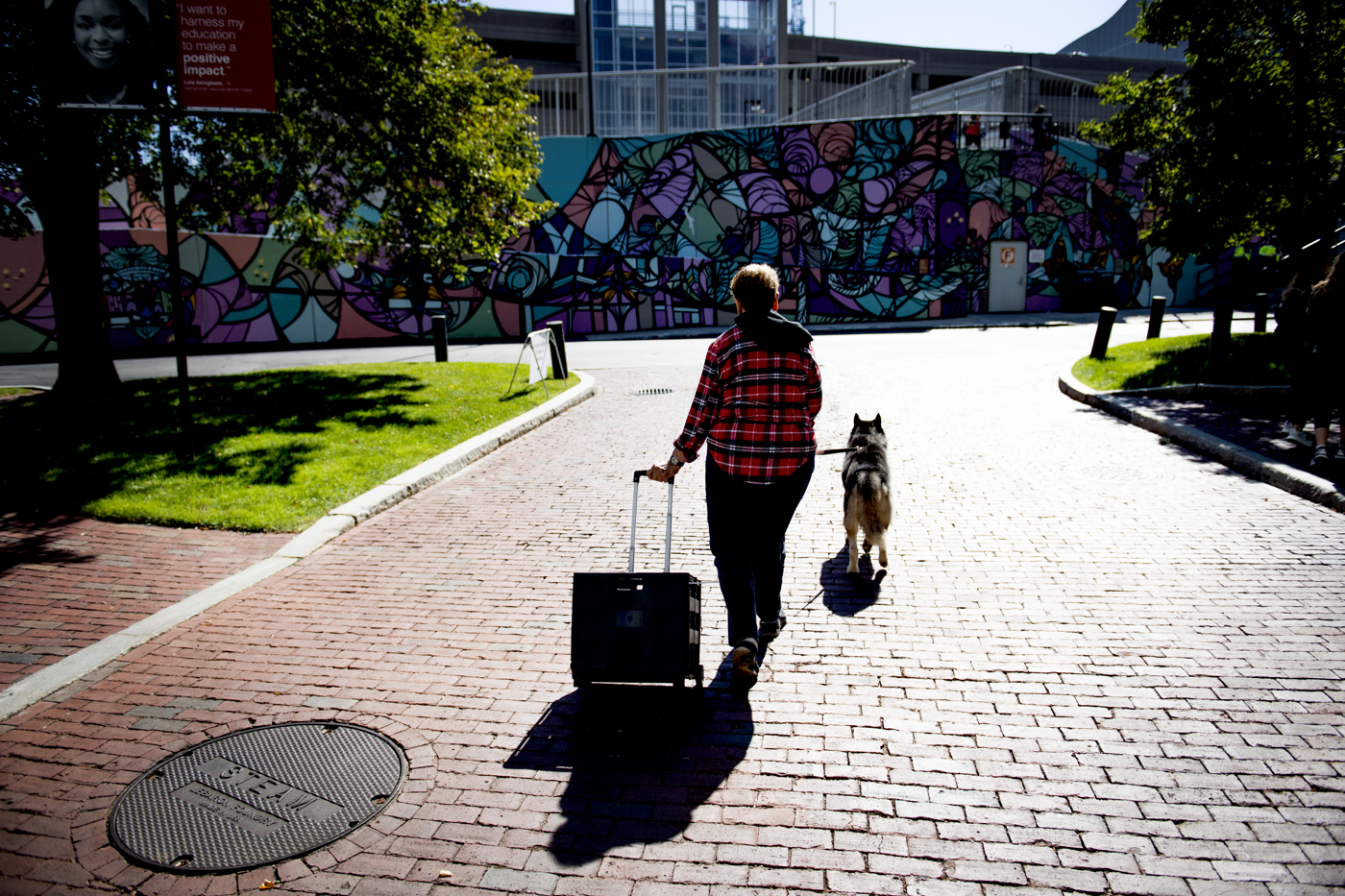Meet the alumna who raises Northeastern’s King Husky mascot
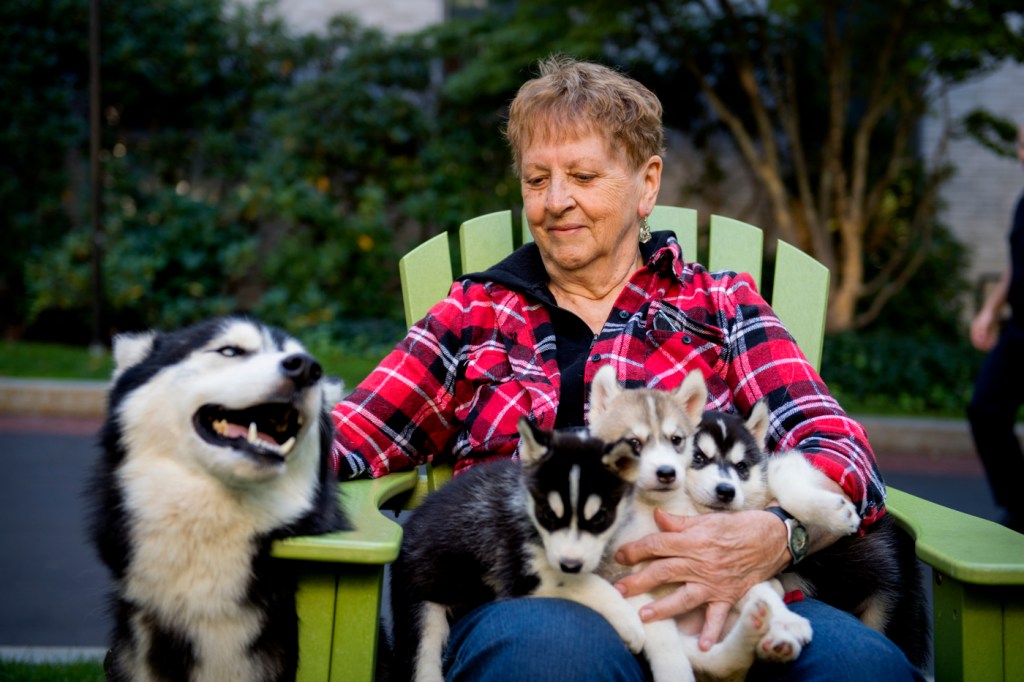
Whenever alumna Margaret Cook travels to campus, she brings with her precious cargo: Northeastern’s King Husky mascot. Cook, who has raised dozens of Huskies, has been the official keeper of the university’s beloved mascot for more than a decade.

Her presence on campus becomes something of a celebrity sighting. On a recent fall afternoon, she arrived with King Husky and three puppies from her most recent litter—each only six weeks old at the time. A mass of students soon surrounded Cook and her dogs, excitedly taking photos.
King Husky leaned into students offering a good head scratch, and the pups happily bounced from hand to hand, seemingly without a care in the world. “They’re loving this,” Cook said at the time, smiling and surveying her Husky pack. “And people love them.”
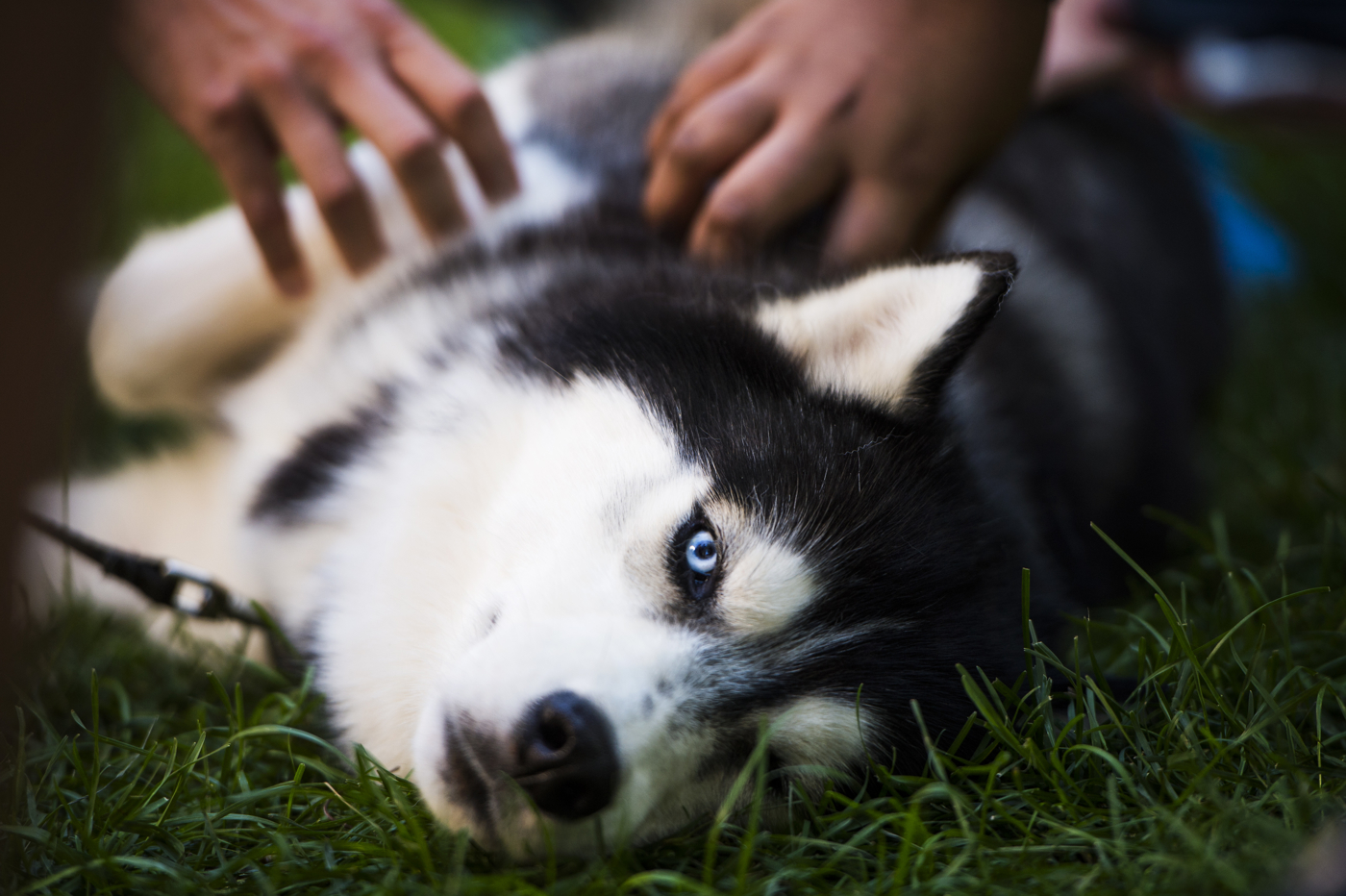
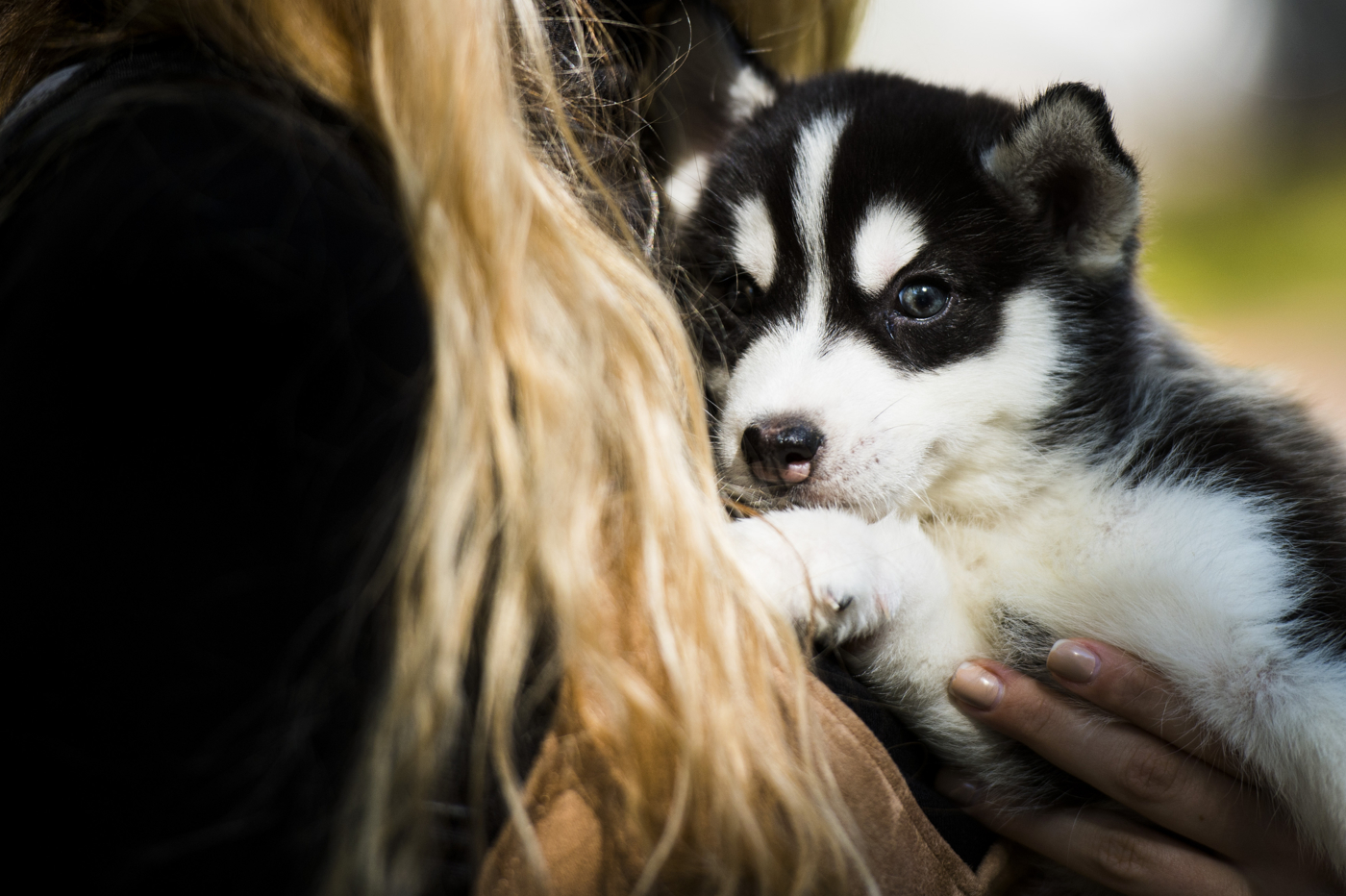

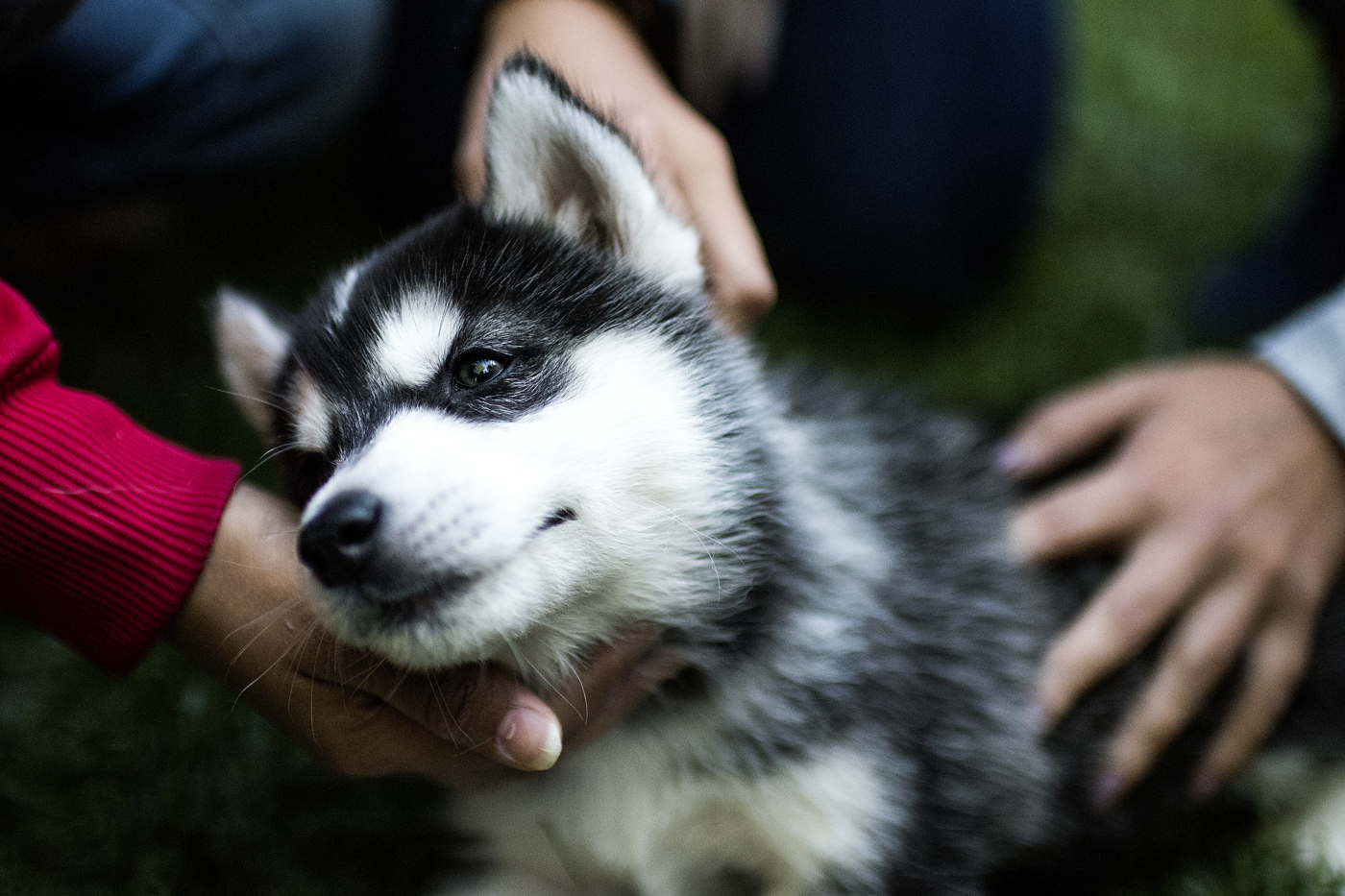
The legend of King Husky dates to 1927, when the first pup arrived at Boston’s North Station by train from Alaska and was greeted by more than 1,000 students and the university band. Bronze statues of Huskies adorn campus, and its tradition that student rub the nose of the Husky in Ell Hall for luck.
For Cook, the tradition started more than a decade ago. Here’s how it all came to be.

For Cook, Siberian Huskies are an integral part of life. In addition to raising them, she’s judged the breed at American Kennel Club dog shows. And, of course, Northeastern owes its mascot, King Husky, to Cook—her Huskies have carried the illustrious title for more than a decade. But her passion didn’t take root until well into her 20s, when Cook met a co-worker’s pet dog.
Cook, a 1964 graduate of the university’s language arts program, landed her first teaching job as a mathematics teacher at a school in Rockland, Massachusetts. One evening, one of her co-workers had a gathering at his house.
“He had a Siberian Husky, and I ended up spending the whole night with the dog.” Cook recalled, laughing.
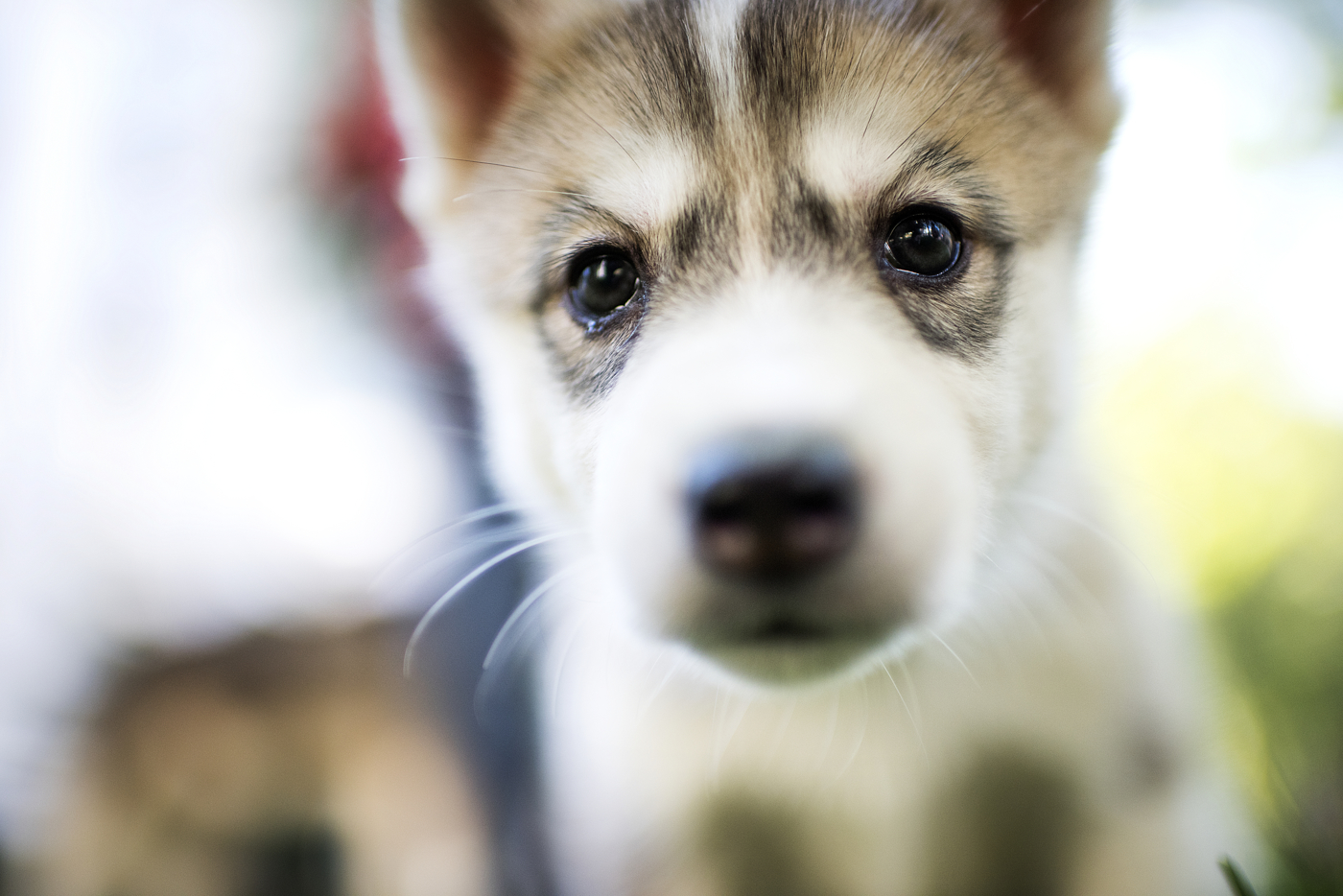
Her interest grew, and she started attending dog shows in the Boston area. Another colleague, a science teacher, was getting ready to breed his female Siberian Husky with a show champion. They had a litter of seven puppies and the runt of the litter—a gray female with blue eyes—was too much to resist, so Cook adopted her.
Soon, she was breeding on her own. The first litter resulted in four puppies. She kept one and sold the rest, leaving her with two Siberian Huskies at home.
Life marches on, as it does, and Cook had two children and developed a group of friends who were similarly passionate about Siberian Huskies. A few among that group periodically got together to run their dogs on the South Shore. That group became a formal sled dog club in 1975, with Cook at the helm.
“With the kids, the races were fun,” she said. “We usually put the sleds on wheels just because there wasn’t enough snow throughout the season.”
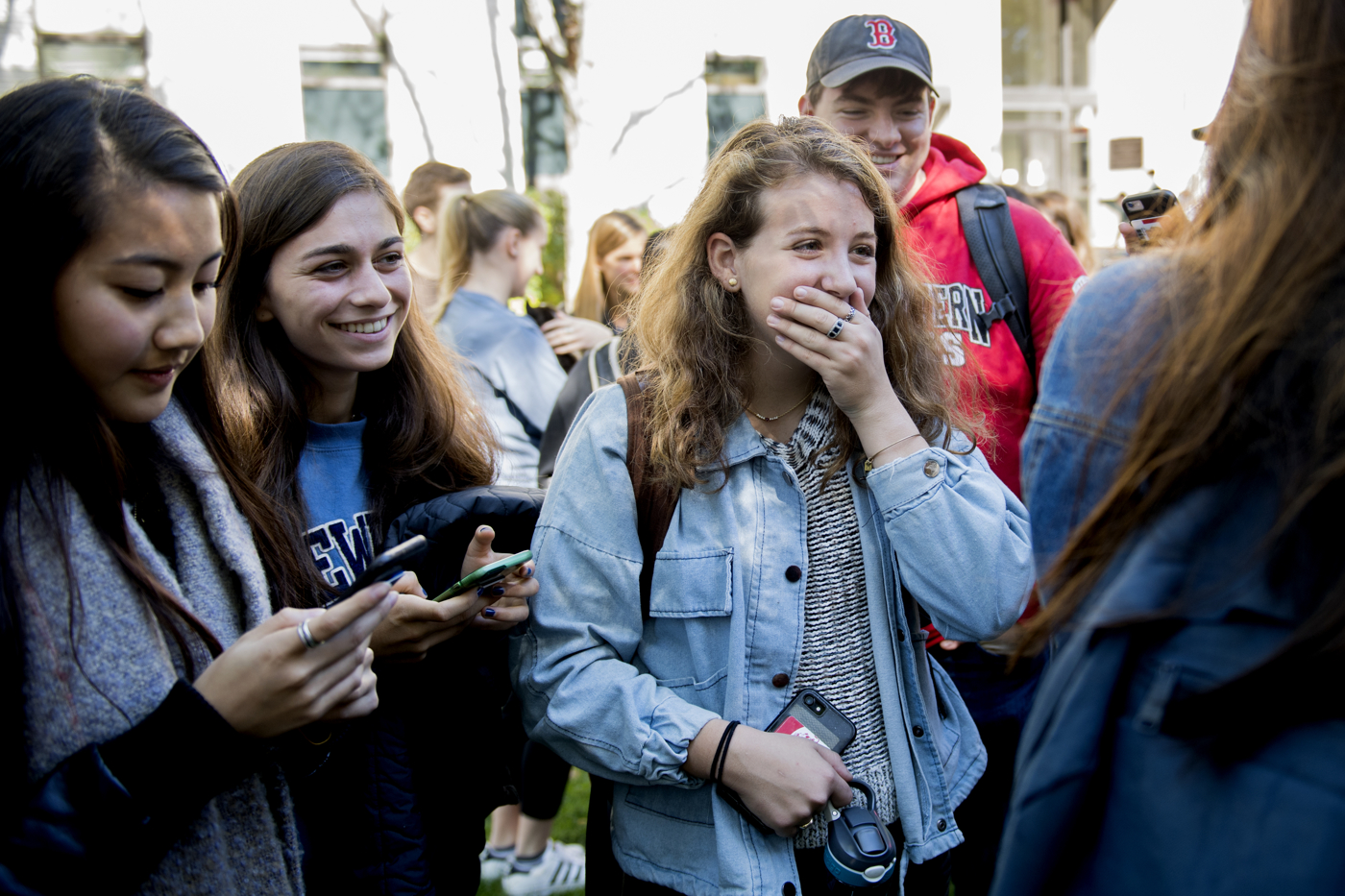
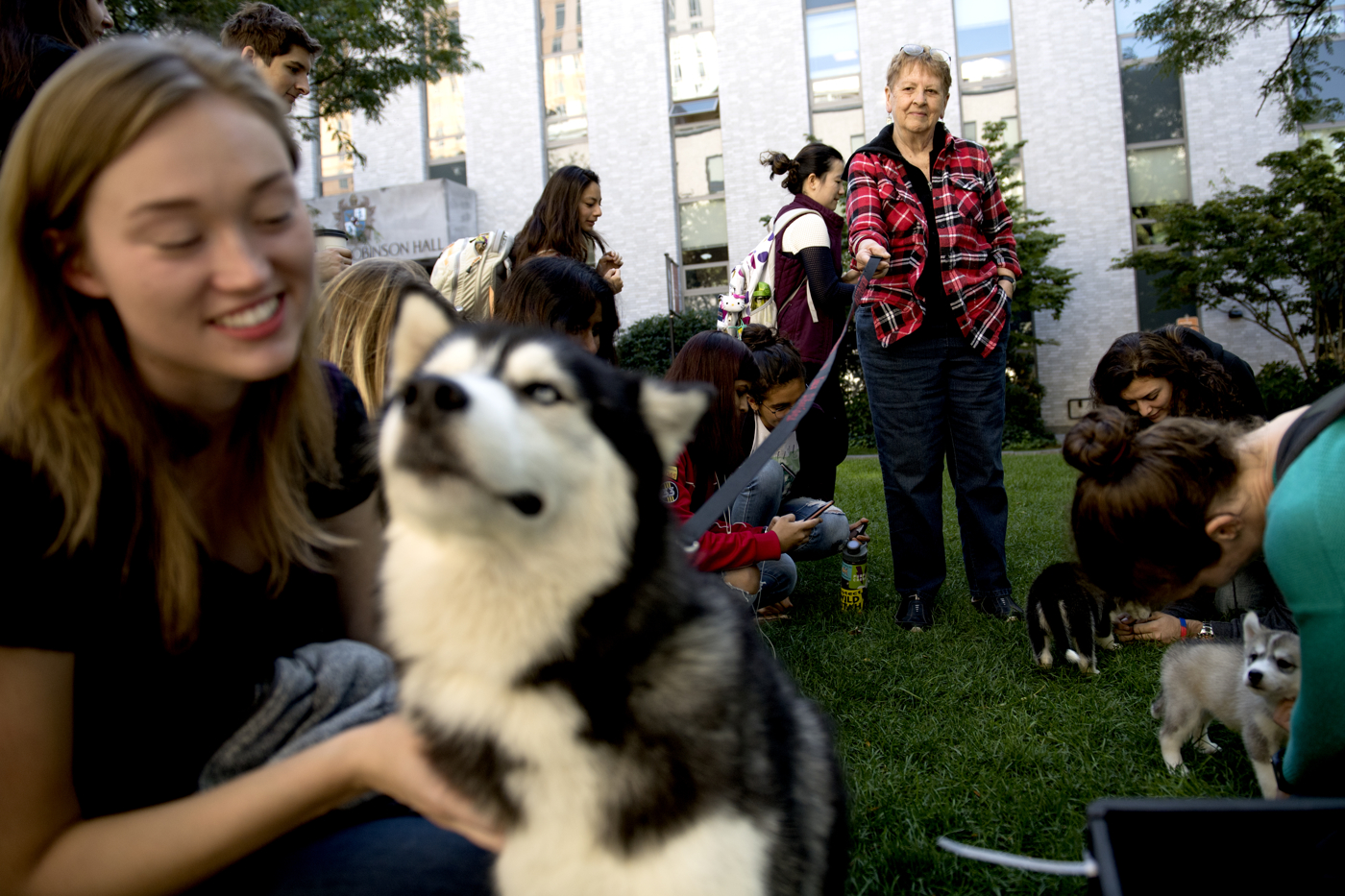
From 1985 to 1991, she ran in the New England dog race circuit—a set of competitions largely in northern New England, including Maine, Vermont, and New Hampshire. The races would take place over a weekend, which sometimes meant more than 600 miles of travel for her and her sled dog team, depending on how far north the race was.
As her Siberian Husky community grew, so too, did her own Siberian Husky family. She bought a “show puppy” from a breeder in Brockton, Massachusetts, and entered her in the obedience portion of a dog show shortly thereafter.
“It kind of just mushroomed after that,” Cook said. More than 70 of her dogs have finished as champions in U.S. and Canadian dog shows, and in 2002, she became a judge herself. One of her Huskies finished at No. 2 in the country in 1988, and she’s since judged in competitions all over the world, including in Australia, New Zealand, and Canada.
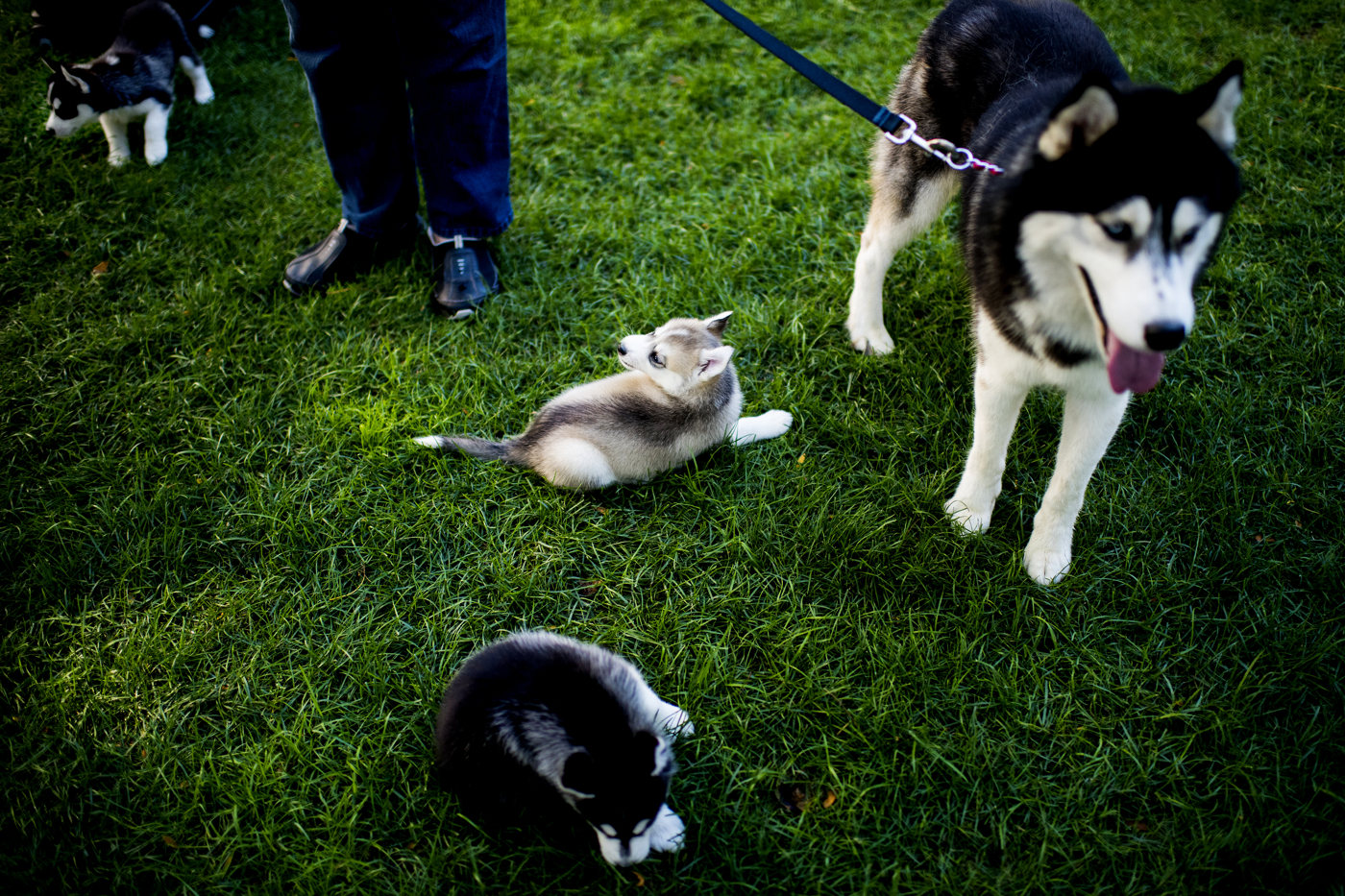
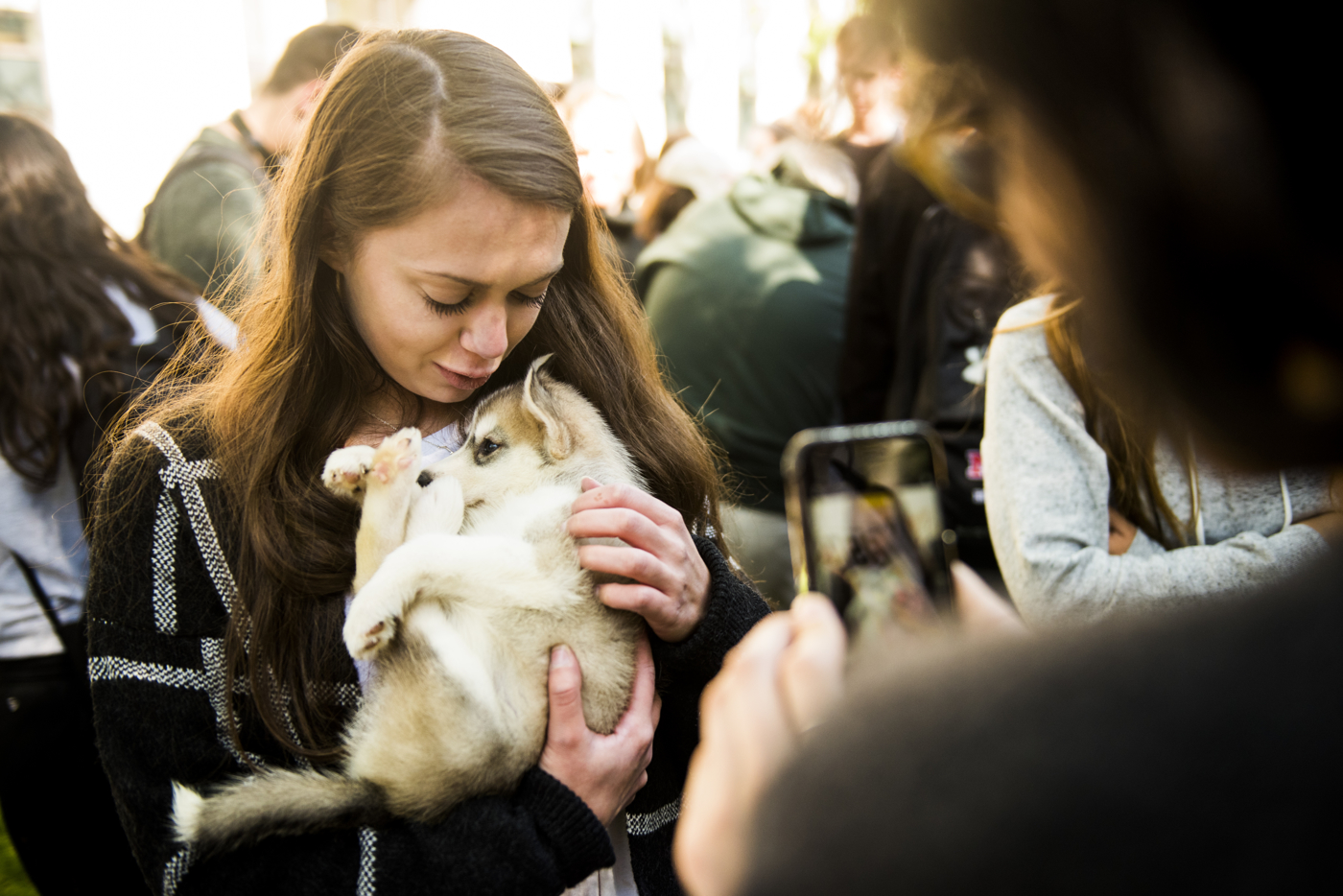
“The bond with a Siberian Husky is as close to a human bond as you can get with a dog,” Cook said, reflecting on what’s now a 50-year connection. “They’re very affectionate, very loving—there’s just a sense of companionship there. And they’re wicked smart.”
In the summer of 2005, a friend of Cook’s notified her that Northeastern was looking to return to its tradition of having a live, purebred Husky mascot. “And I’ve been doing it ever since then,” she said. “I love to be able to give back to the university in this way.”

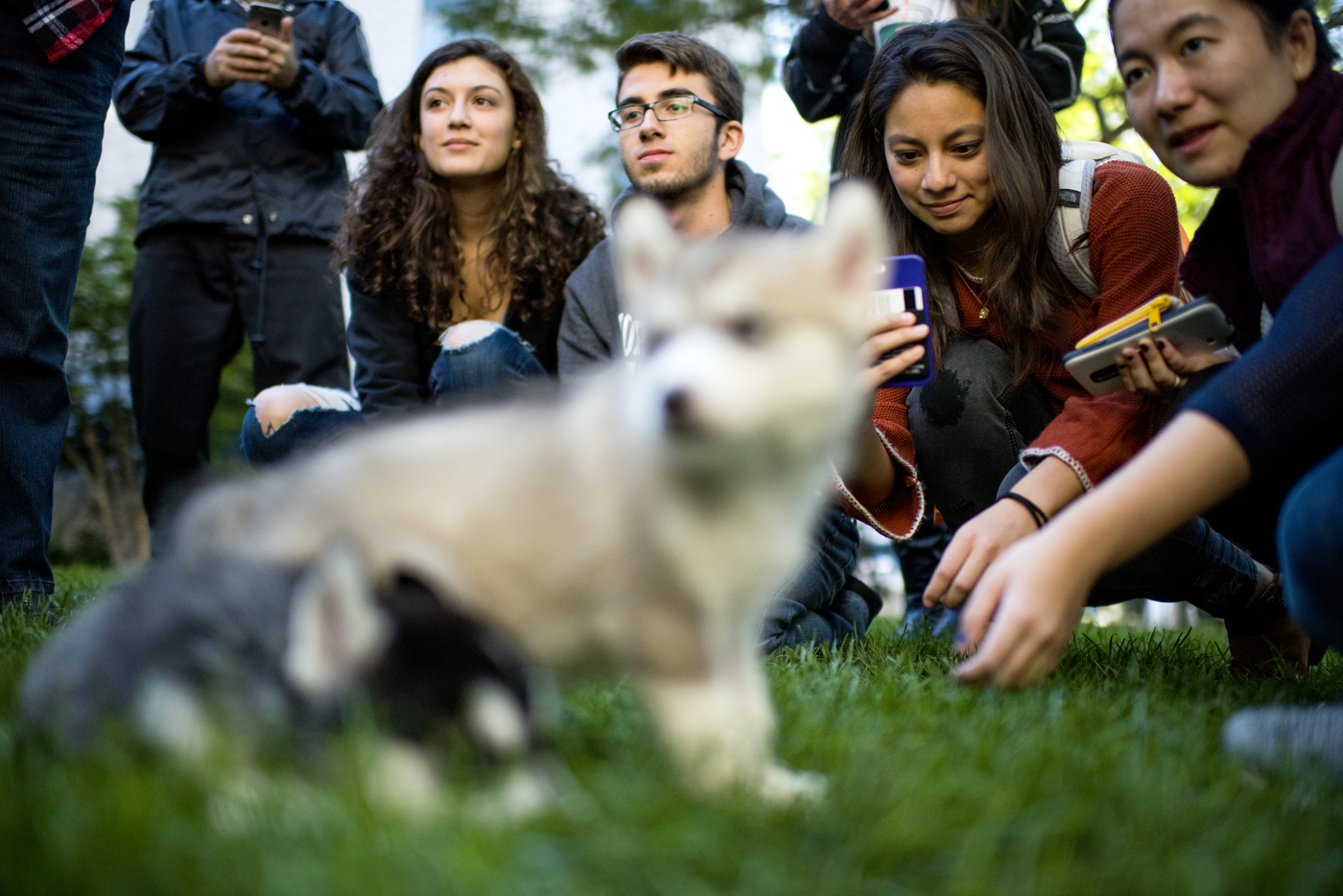
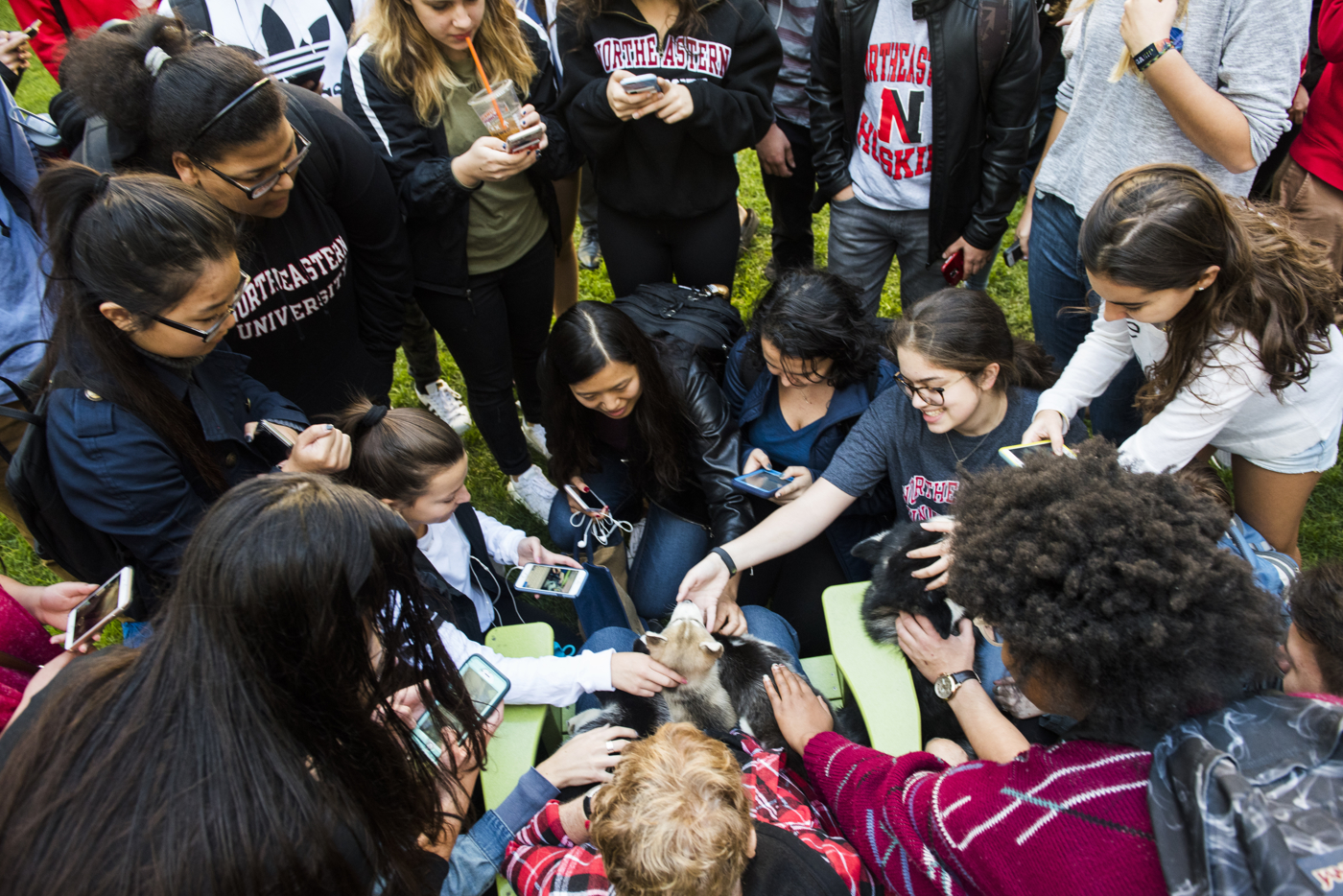
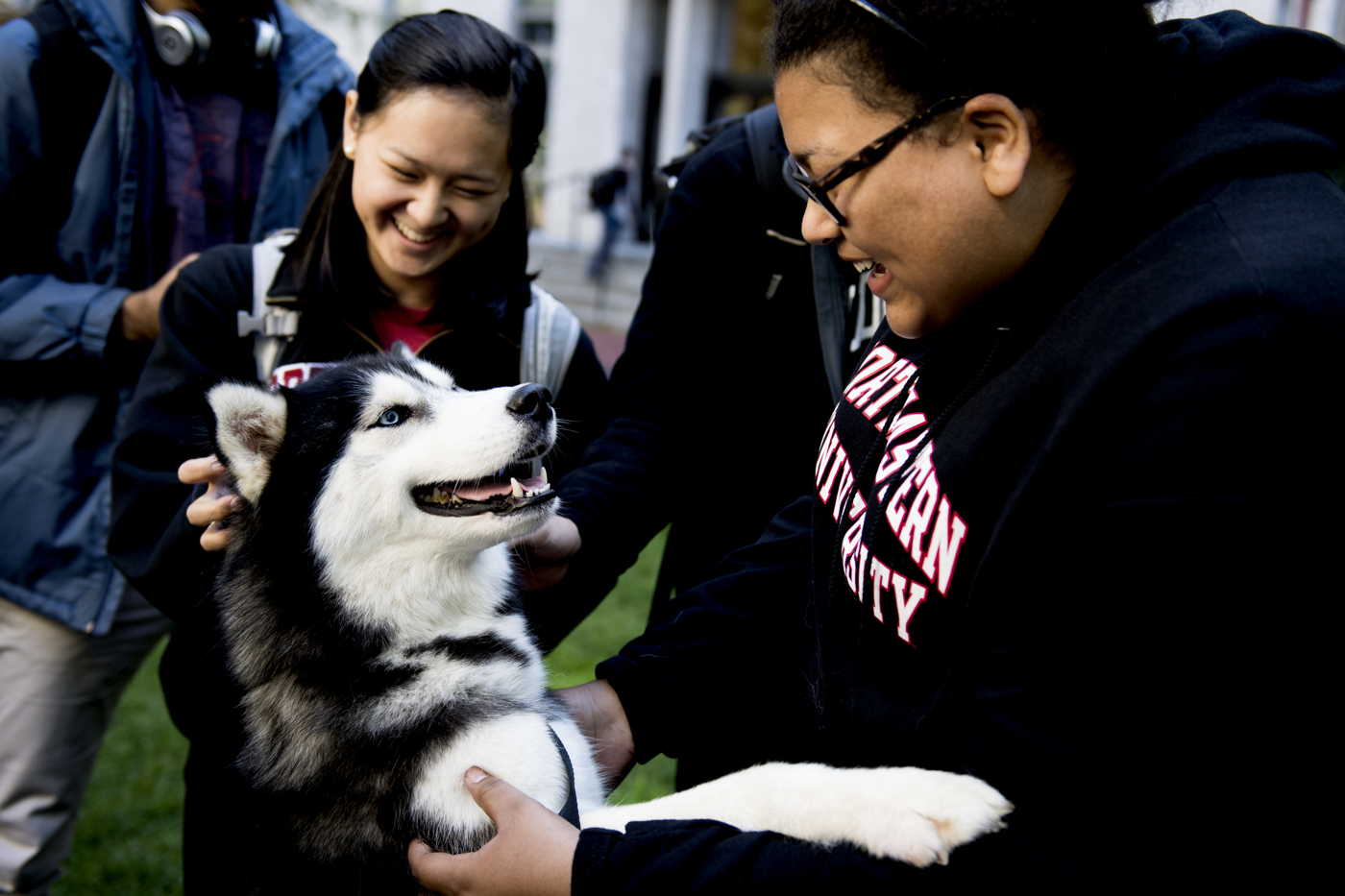
Since 2005, three of her dogs have held the King Husky name. Each has had its own personality, but they’ve all shared a crucial trait. “They’re hams,” Cook said, deadpan.
